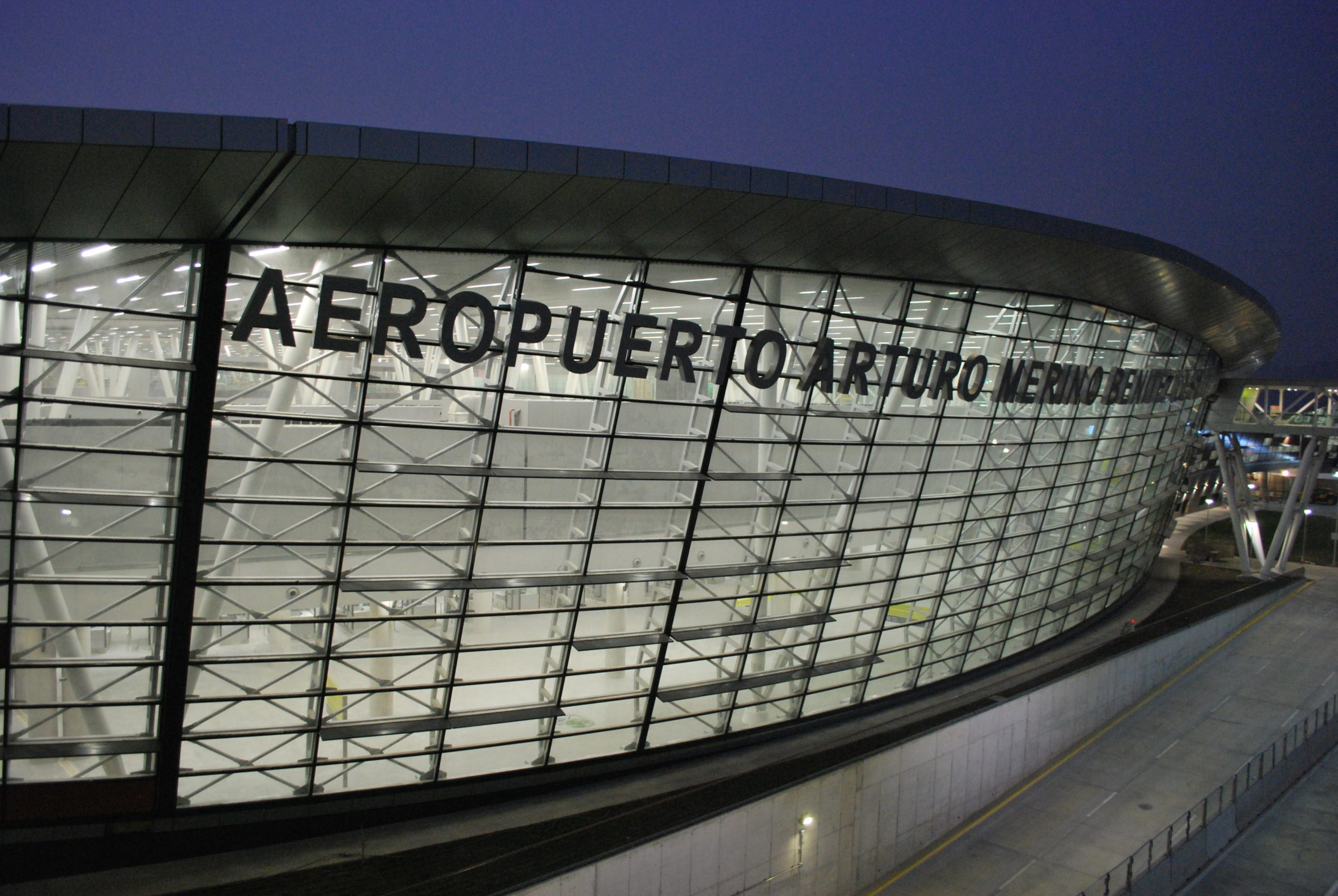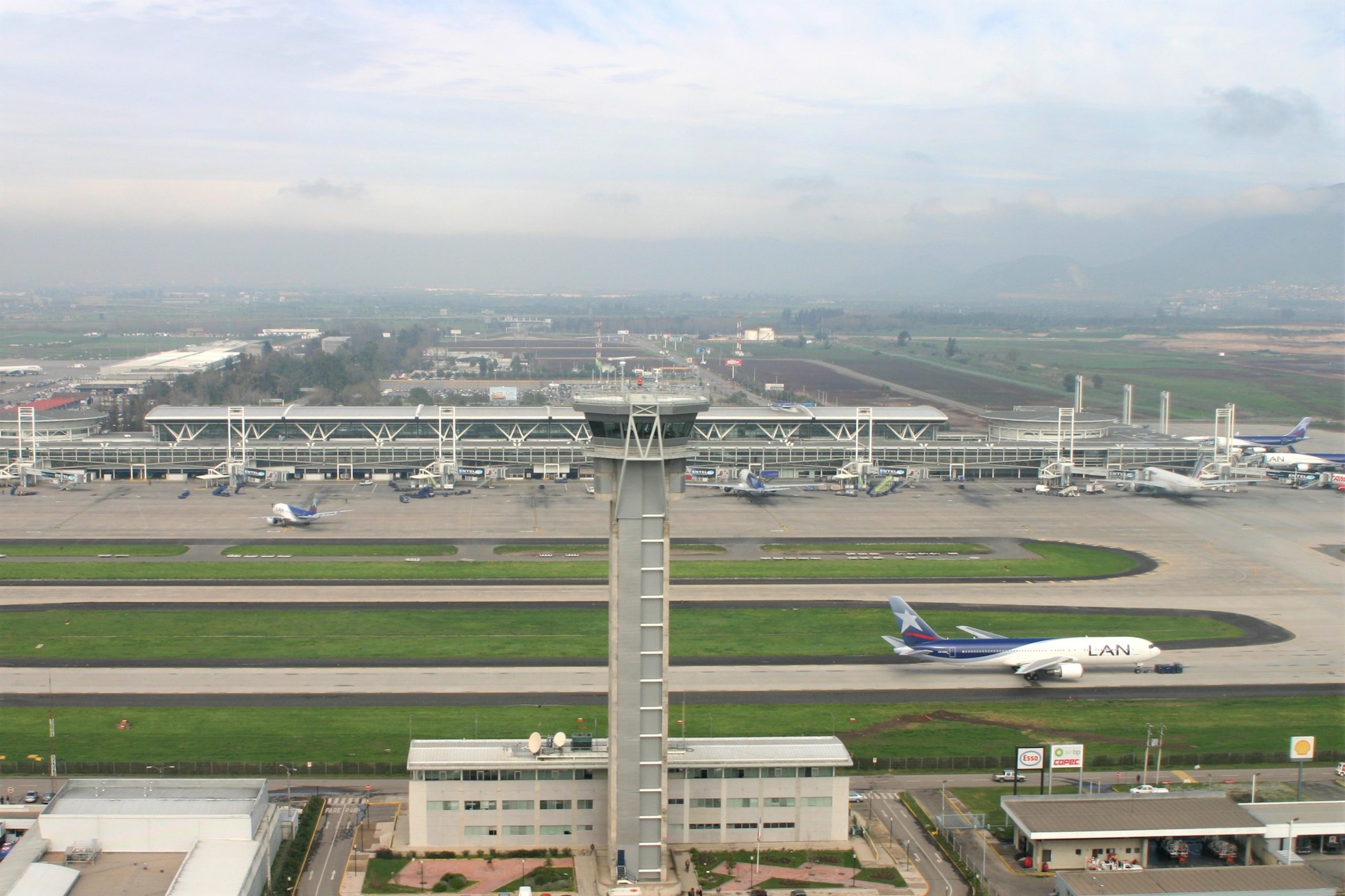Source: DGAC Chile
- Initially called “Pudahuel”, on March 19, 1980, it was renamed Arturo Merino Benítez Airport, in honor of the first Commander-in-Chief of the Chilean Air Force (FACH) and the main precursor of civil and commercial aviation in Chile
- At Chile’s main air terminal, there are 1,067 aeronautical professionals and technicians who provide all the necessary services relating to security for the thousands of air operations carried out every day at this airport, which is undergoing expansion and modernization which will make it one of the the most important air terminals in South America
On February 9, 1967, during the government of His Excellency President Eduardo Frei, the Pudahuel Airport, current Santiago’s Arturo Merino Benítez Airport (AMB), was created. The inauguration ceremony was headed by the president in the company of the highest authorities of the country.
Its origin dates back to 1955, when a commission of North American experts (Mission Brett), carried out a study to determine the best location for the new Santiago air terminal, to replace the Cerrillos airport, which no longer met the modernity requirements of those times. Financing was obtained through a loan from the Inter-American Development Bank (IDB).
Due to its topographical characteristics and few natural obstacles, Pudahuel was chosen, a sector to the west of the capital from which the new airport took its name. On March 19, 1980, it received the name of Arturo Merino Benitez Airport, in honor of the first Commander in Chief of the Chilean Air Force (FACH) and the main precursor of civil and commercial aviation in Chile.
After two decades of operation and due to the continuous growth of air activity, the terminal became too small to receive national and international flights. For this reason, the construction of a new international terminal began, leaving the existing one exclusively for domestic flights. That is how, on February 14, 1994, during the government of His Excellency Patricio Aylwin, a modern 25,000-square-meter facility for international flights was inaugurated, divided into three air-conditioned floors and equipped to provide maximum comfort to the public and to mobilize around 4 million passengers and 200 thousand tons of cargo per year. These included modern visual aids and the implementation of the Instrumental Landing System (ILS) that allowed the airport to operate in category III A (land with 200 meters of visibility and take off with 175), placing Chile at an excellent level with respect to other airports in the world.
As a consequence of the economic growth of the country, air transport became one of the means of transport most used by Chileans to get around within the country and to travel abroad. For this reason, in March 1996, President Eduardo Frei Ruiz-Tagle announced the new “Airport Policy”, which allowed the incorporation of the private sector to finance the construction of airports in Chile.
By virtue of this policy and after winning the tender, the Chilean Society SCL Terminal Aéreo Santiago S.A., formed by national and foreign companies, began in May 1998, a new expansion and remodeling of the AMB Airport. Thus, on December 15, 1999, the Bravo Stage was inaugurated, which increased its capacity including the construction of the new 65-meter-high Control Tower; an aircraft parking platform of 75,000 square meters; the increase from 4 to 10 boarding bridges; the expansion of the international terminal, Cargo Terminal and new buildings for the DGAC, SAG and Customs.
Starting in 2001, with the delivery of the Charlie Stage, various improvements were added to its infrastructure, including the expansion of the runway and the construction of a second runway (17R) of 4 thousand meters, which was opened in 2005. The ILS Category III B system was implemented on the old runway (17L), which allows landings and takeoffs with only 50 meters of visibility.
On April 21, 2015, the AMB airport was awarded to the concessionaire Nuevo Pudahuel, whose main objective was to increase passenger capacity to 30 million by 2020, with a total potential of 45 million. In 2019, the Director of the DGAC, General of Aviation, Victor Villalobos, ordered the improvement of the instrument condition of runway 17R (new runway), implementing an ILS Category IIIB, leaving the airport operating with two runways in equal conditions and capabilities.
Currently, the AMB airport is administered by the General Directorate of Civil Aeronautics (DGAC). 1,067 aeronautical professionals and technicians work there, providing all the necessary services relating mainly to security for the thousands of air operations carried out every day at this airport, which is undergoing expansion and modernization that will make it one of the most important air terminals in South America.



